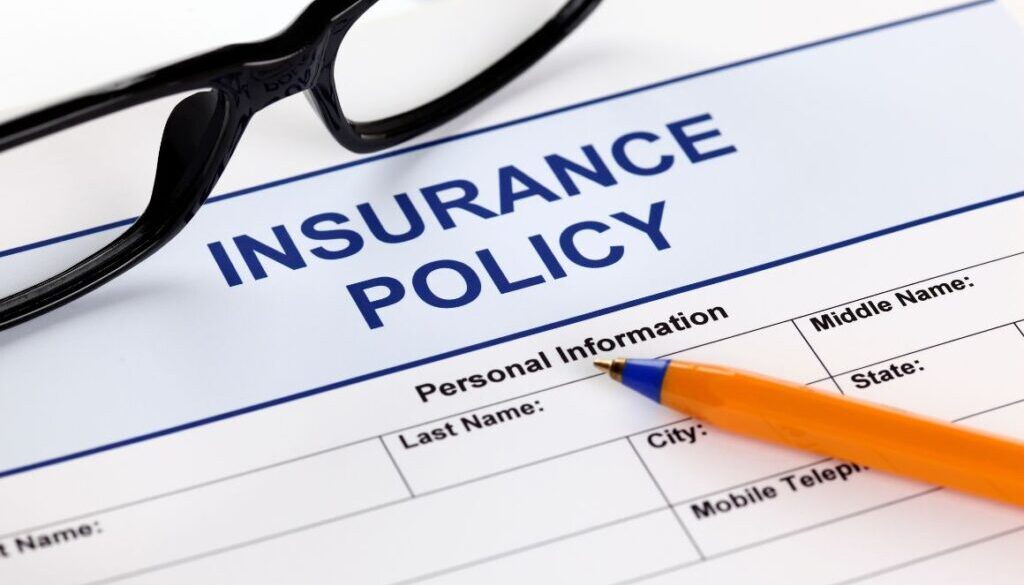Essential Facts About Life Insurance Premiums Every Policyholder Should Know
Table of Contents
Essential Facts About Life Insurance Premiums Every Policyholder Should Know
Most Americans believe life insurance costs three times more than it actually does. A Life Happens survey reveals that over half of Americans lack knowledge about what affects their life insurance premiums. This gap in understanding could cost you dearly throughout your policy’s lifetime.
Your life insurance premium costs depend on several key factors and knowing them helps you make better coverage decisions. Your health status plays a crucial role in determining your rates. A healthy person’s insurance policy costs less than someone with health issues. Life choices matter too. Smokers face higher premiums because smoking leads to heart disease, lung cancer, and breathing problems.
Your personal traits shape your insurance costs. Young policyholders enjoy lower premiums because insurers know their chances of paying out increase with age. Your gender matters too. American women’s life expectancy stands at 80.2 years while men’s averages 74.8 years.
This piece explains the key factors behind your life insurance premiums. You’ll learn to make informed choices and possibly save money along the way.
Health and Lifestyle Factors That Influence Premiums
Your health profile substantially affects your life insurance costs. Insurance companies assess many aspects of your well-being to set the right premiums based on your risk level.
Pre-existing medical conditions
Pre-existing conditions won’t automatically disqualify you from coverage, despite what many believe. These conditions often result in higher premiums or modified coverage terms. Heart disease, cancer, diabetes, and high blood pressure are common conditions that affect rates. Studies show all but one of these adults under age 65 have some type of pre-existing medical condition. Your rates depend on your condition’s severity and how well you manage it. Well-controlled conditions usually lead to better premiums.
Smoking and alcohol use
Tobacco use drives up life insurance costs. Smokers pay two to three times more than non-smokers for similar coverage. Insurers will call it smoking even if you only use tobacco occasionally. Your alcohol consumption also affects rates based on how much and how often you drink. Heavy drinking raises your chances of liver disease and heart problems, so your premiums go up. The combination of smoking and drinking multiplies your risk factors rather than just adding to them, which could make your premiums two or three times higher.
Weight and physical fitness
Insurance providers look at your height-to-weight ratio as a health indicator. Being overweight associates with higher risks of hypertension, type 2 diabetes, and heart disease. All the same, weight alone rarely disqualifies applicants. Insurers look at your complete health profile, including how fit you are and other health metrics.
Family medical history
Your immediate family’s illness patterns matter to insurers, especially when dealing with genetic conditions. Your premium rates might increase if your parents or siblings have cancer, heart disease, or diabetes. The effect changes based on the number of affected relatives, their relationship to you, and when the disease appeared.
Medical test results and disclosures
Insurers usually ask for medical exams during underwriting to check your health status. These exams check vital signs, blood and urine samples, and sometimes include an EKG if you’re over 50. Being honest throughout this process is vital—lying about your health history or habits could void your policy or get claims denied later.
Other Personal Factors That Affect Premiums
Your life insurance premiums depend on many personal characteristics beyond your health status. These factors create your statistical risk profile and affect what you pay by a lot.
Age and life stage
Your premium costs are heavily influenced by your age. The numbers show that premiums typically go up by 8% to 10% each year. People in their 40s might see a smaller increase of 5%, but those over 50 could face yearly jumps of up to 12%. This rise happens because older policyholders create more risk for insurers, and death becomes more likely with age. You can lock in lower rates for your entire policy term by buying coverage early in life.
Gender-based risk assessment
Premium costs follow a different pattern when it comes to gender pricing. Life insurance costs less for women than men. The reason lies in U.S. life expectancy statistics – women live longer (80.2 years) than men (74.8 years), with a 5.4-year gap. These mortality statistics help insurance companies calculate risk, which leads to different premium structures for each gender.
Occupation and work environment
Your job can raise your life insurance costs by a lot. High-risk jobs add $2.00 to $5.00 per $1,000 of coverage each year. Here are some jobs with high mortality rates:
- Fishing and hunting workers (145 fatal injuries per 100,000 workers)
- Logging workers (69 fatal injuries per 100,000 workers)
- Aircraft pilots and engineers (62 fatal injuries per 100,000 workers)
- Construction and mining personnel
Hobbies and high-risk activities
Your premium costs might also go up because of your hobbies. Insurance companies look closely at activities that could lead to injury or death. Skydiving, scuba diving, mountain climbing, BASE jumping, and race car driving often raise red flags. Some insurers offer policies with flat extra charges for thrill-seekers – these are extra amounts added to standard premiums to balance the risk. Other carriers might write policies that don’t cover deaths during these activities.
Policy-Related Factors You Should Know
Your personal traits matter, but your policy choices directly affect your premiums. You can control your costs better by knowing these key factors.
Type of life insurance policy
Your choice of policy type shapes your costs. Term life insurance costs substantially less than permanent coverage. Term policies expire after a set period (10-30 years), making them more affordable than whole life insurance that covers you for life. Universal life insurance gives you flexibility but costs more than term policies. Variable universal life has investment options that add to your costs.
Coverage amount and term length
Higher coverage amounts naturally lead to higher premiums. Your costs go up with each additional $100,000 in coverage. The length of your policy also drives the price—longer terms cost more because they extend your insurer’s risk. To name just one example, see how a 30-year term policy costs more than a 10-year policy with the same coverage.
Riders and add-ons
Riders are optional features that customize your coverage but usually boost your premiums. Popular riders include:
- Disability waiver of premium that pays your premiums if you become disabled
- Accelerated death benefit that lets you access funds after a terminal illness diagnosis
- Long-term care rider that helps with nursing home or home care costs
- Return of premium rider that gives back your paid premiums if you outlive your policy term
Payment frequency and mode
Your payment schedule affects your total costs. Monthly payments might seem easier but end up costing more annually. Here’s an example: monthly payments of $150 add up to $1,800 yearly, while annual payments might be $1,250—saving you $550 each year. This happens because insurers spend more to process frequent payments and face more uncertainty.
How to Lower Your Life Insurance Premiums
You can take control of your life insurance costs more easily than you think. A few smart moves could save you thousands throughout your policy’s lifetime.
Adopt a healthier lifestyle
Your premium costs depend directly on your health. Non-smokers pay half to one-third of what smokers pay. Most insurers will give you non-smoker rates if you quit tobacco for at least 12 months. Your focus should be on:
- Keeping a healthy weight to lower diabetes and heart disease risks
- Getting better blood pressure and cholesterol numbers
- Making exercise and balanced diet part of your routine
- Cutting back on alcohol
These lifestyle changes will reduce your premiums and make you healthier. You can ask for a rate review based on health improvements after your policy’s first year.
Buy insurance at a younger age
Your age affects premium costs by a lot. Life insurance rates go up between 4.5% and 9.2% each year you delay. People over 50 might see yearly increases of 12%. Getting coverage in your 20s or 30s helps you lock in lower rates for the whole term. This could save you substantial money as time passes.
Compare quotes from multiple insurers
Insurance companies use their own guidelines to review applications. So, premiums can be quite different for similar coverage. Online comparison tools or independent brokers can help you shop multiple carriers at once. Look at each insurer’s financial strength and customer service track record too.
Avoid unnecessary riders
Extra add-ons can push your premium up by 10% to 50%. Riders like accidental death and dismemberment or return of premium rarely give you value worth their cost. Review which riders matter for your situation and skip those that don’t match your needs.
Be honest in your application
You might feel tempted to hide health issues or risky activities, but dishonesty can void your policy. Insurance fraud includes misrepresentation and could lead to denied claims. Being truthful will protect your beneficiaries and help match you with the right insurer for your situation.
Conclusion
Life insurance is a vital financial safety net for your loved ones. Learning what affects premium costs can help you save thousands over time. This piece explores how your health, lifestyle choices, personal traits and policy picks shape your coverage costs.
Your health is the biggest factor in setting premiums. Insurance companies look at existing conditions, whether you smoke, how much you drink, your weight and your family’s medical history. Your age, gender, job and hobbies also affect your rates by a lot.
Policy choices directly shape what you’ll pay. Term life insurance costs less than permanent coverage. The amount of coverage, how long it lasts and any extra features you pick will change your final cost. You can save money by paying annually instead of monthly.
Now you can make smart choices to get better rates. Stop smoking, keep a healthy weight and exercise often. These changes make your life better and lower your premiums too. Getting coverage when you’re younger locks in lower rates. Shopping around with different insurers will give you the best deal possible.
Life insurance protects the people who rely on you financially. Understanding what drives costs helps you take charge of this key part of financial planning. You can get the right coverage at the best rate, giving you peace of mind without straining your wallet.




